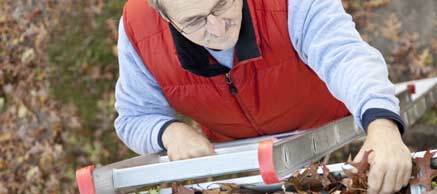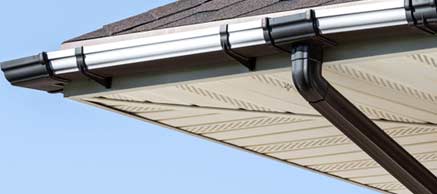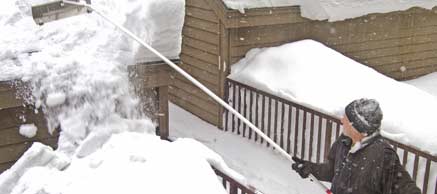
One of the most common and repetitive causes of property damage to building interiors is water damage resulting from the formation of ice dams on roofs.
An ice dam is a ridge of ice that forms at the edge of a roof and prevents the water produced by melting snow from draining off the roof. The water that backs up behind the dam can leak into a building causing damage to walls, ceilings, and insulation.
Causes of Ice Dams
- Heat leakage from the interior of the building into attic or loft areas that warms the middle and upper areas of roof decks (see Causes of Heat Leakage below).
- Snow accumulation on the roof surface provides the potential for snow melt and re-freezing in the form of an ice dam. This problem can be
aggravated by lower pitched roofs, complex roof structures with multiple planes and south facing roof exposures. - Sustained exterior temperatures below 32 degrees which create conditions under which snow melt water will re-freeze at the eave level of the roof.
Causes of Heat Leakage
- An insufficient layer of insulation in the ceiling assembly below the attic or loft area as well as uninsulated or poorly insulated exterior walls.
- Improperly insulated recessed ceiling light fixtures.
- Improperly sealed and insulated ventilation fans, heating and air conditioning ducts and plumbing vent stacks.
- Stationary or pull-down attic stairways lacking adequate seals and insulation.
- Unenclosed furnaces or heating system air handlers located in attic areas.
Strategies
Strategies for avoiding water damage from ice dams take two general forms:
- Prevent the formation of ice dams.
- Provide a reliable means for roof surface snow melt water to drain off the roof to prevent water accumulation behind the ice dam.
Prevention of Ice Dams

Clear Gutters

Ventilated Roof Soffit

Attic Insulation

Roof Rake
- Provide soffit and ridge ventilation to create and sustain a flow of cold air along the bottom surface of the roof deck.
- Increase the thickness of insulation in the ceiling assembly below the attic or loft area.
- Insulate around recessed ceiling light fixtures following manufacturers recommendations.
- Insulate heating ducts or pipes located in attic or loft areas.
- Utilize spray foam insulation to fully seal around ventilation fans, plumbing vent stacks and other penetrations of the ceiling assemblies.
- Provide seasonal insulation of whole house fan louvers and attic access stairways.
- Provide attic furnaces and air handlers with insulated enclosures including provisions for combustion air to be routed to the enclosure from the
exterior of the building. - Use roof rakes to prevent large accumulations of snow on roof surfaces, especially at the lowest eave level.
Maintain Drainage
If you have had ice dams before and you have not made physical changes to your building to eliminate the causes of ice dam formation, there is a very good chance that you will experience ice dam formation again in the same locations.
The following measures may help maintain proper drainage through ice dams and reduce the potential for ice dam related water damage to the interior of your building:
- Clean Gutters – Keep gutters and downspouts free from debris that may cause blockage.
- Ice and Water Shield – Install beneath shingles to a point 3-6 feet up the roof deck from the eave to provide a greater margin of protection for water back-up behind ice dams.
- Roof Heating Cables – In those locations where ice dams have previously formed, install roof heating cables on the roof deck at eave level. Arrange the cables in a zigzag pattern to create and maintain diagonal drainage paths through the ice dams that form.
- Ice Dam Socks/Snow Melt Socks/Ice Melt Bricks or Blocks – Ice dam or snow melt socks are 36 inch long tubes typically constructed of a fine mesh polyester fabric. The tubes are sealed at the bottom and have a drawstring opening at the top. The tubes are filled with non-staining/non-rock salt snow melt compounds commonly available at online or home supply and building material retailers. The filled and sealed socks are placed on the roof deck at eave level in those areas where ice dams have previously formed. They are positioned at right angles to the edge of the roof and extend slightly over the gutter or edge of the roof. The ice melt socks will maintain snow melt water drainage channels through any ice dams that form. Ice melt bricks or blocks can also be purchased online or at home supply and building material retailers. They function in similar fashion to ice dam/snow melt socks. The socks or bricks/blocks can be positioned on the roof deck prior to the first snow fall and can provide melting protection for the duration of the winter.


